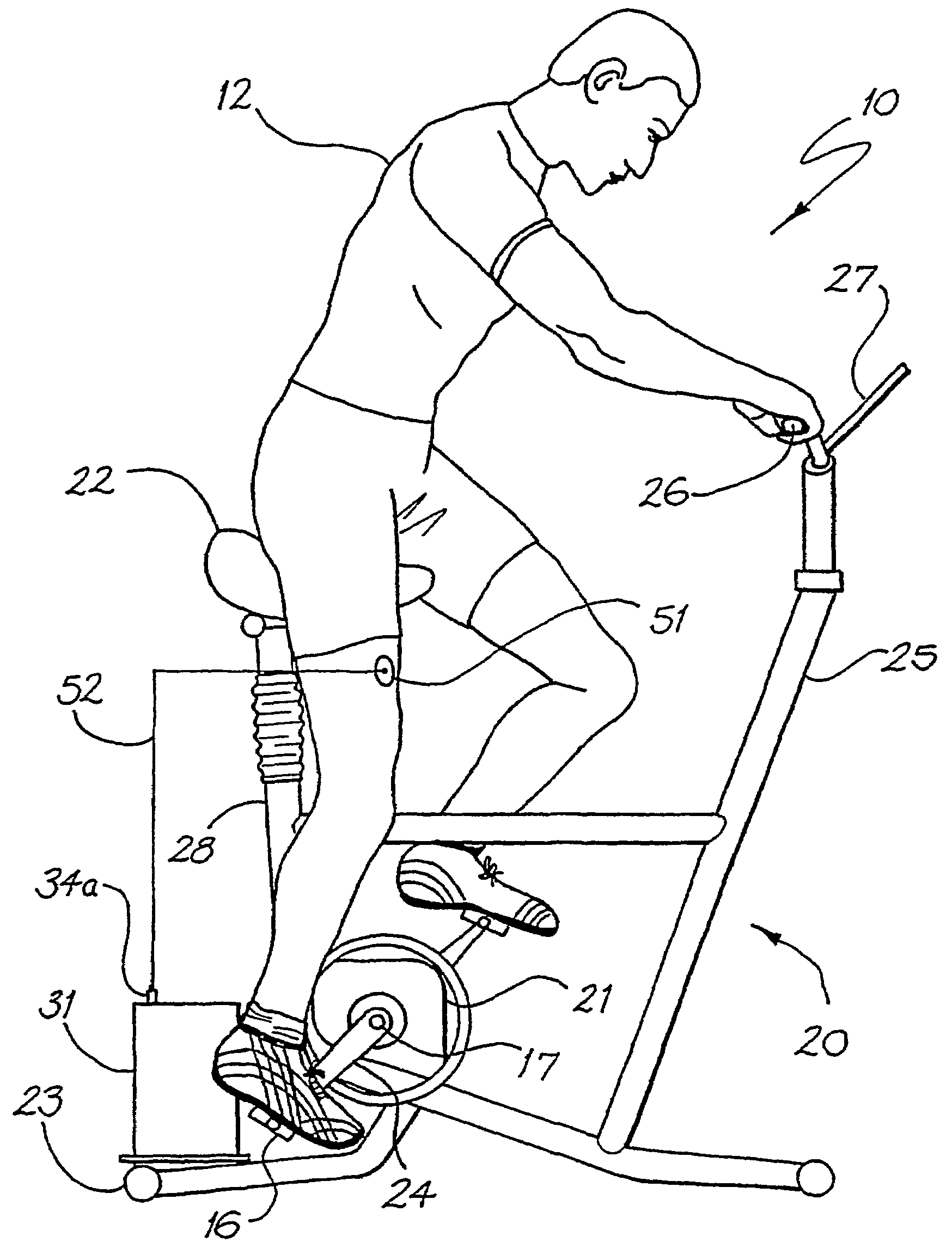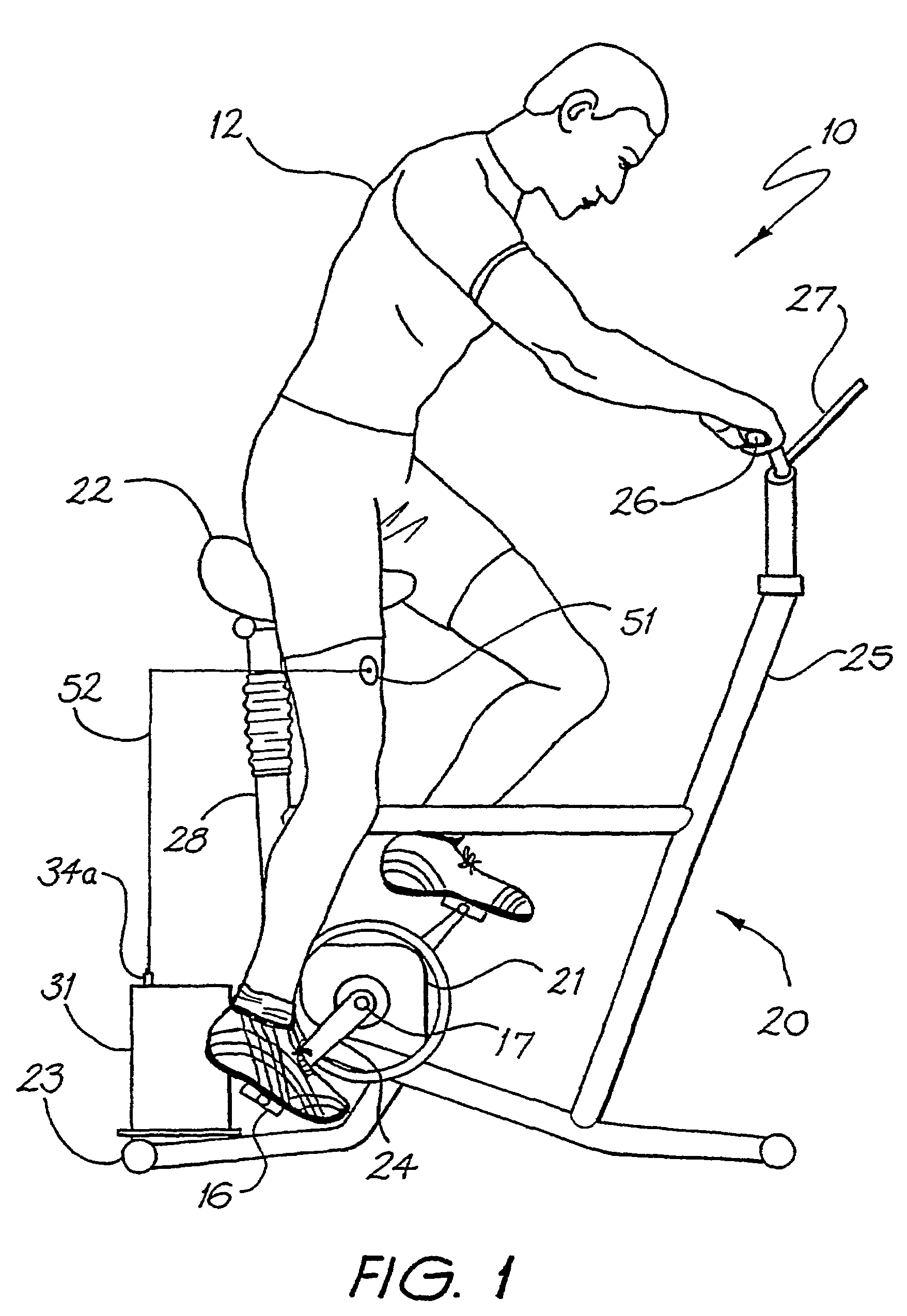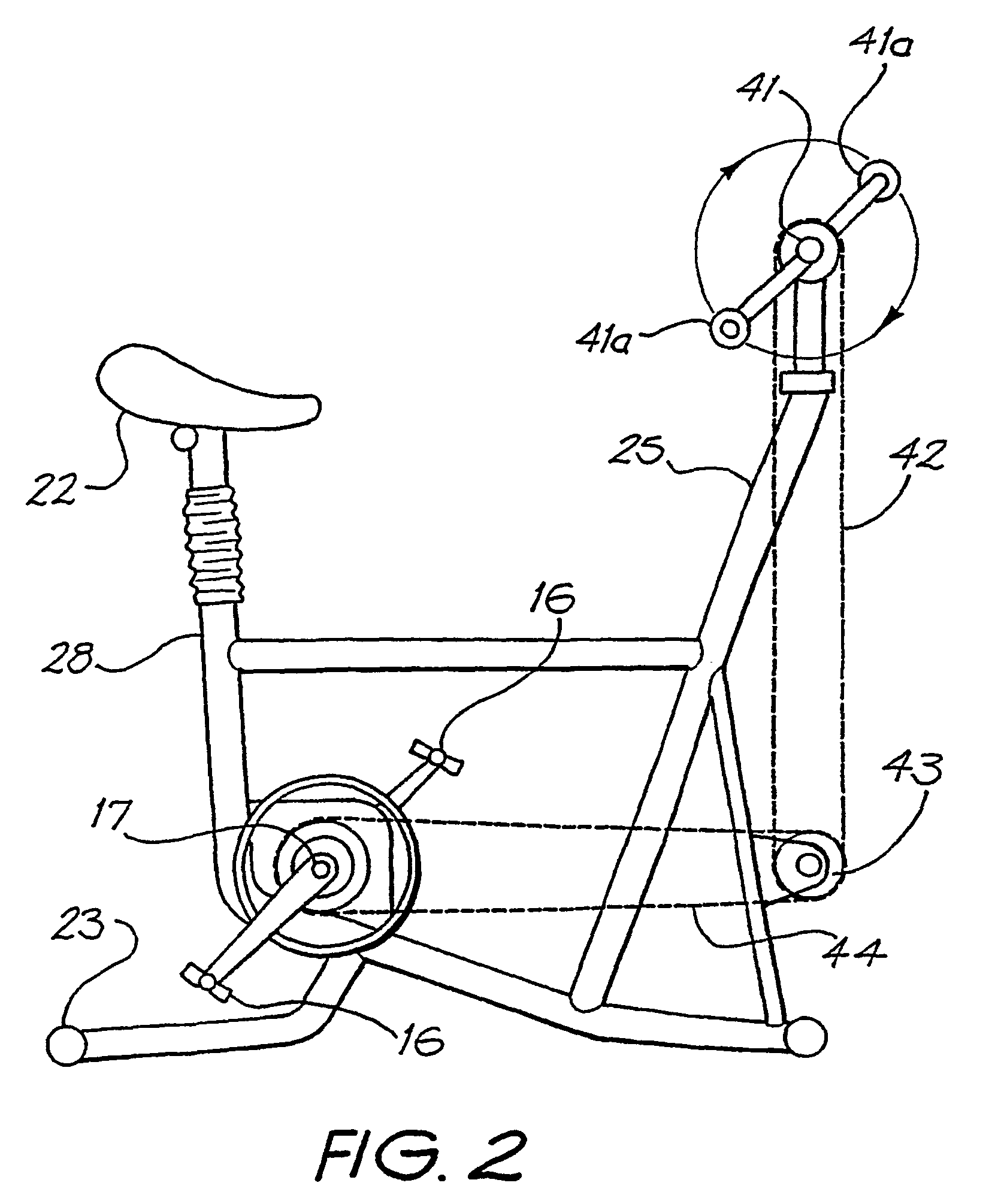Exercise apparatus for a person with muscular deficiency
a technology for exercising equipment and a person with muscular deficiency, applied in the field of functional electrical stimulation (fes) system, can solve the problems of wasting muscles, affecting the function of muscles that were previously routinely exercised, and affecting the performance of muscles,
- Summary
- Abstract
- Description
- Claims
- Application Information
AI Technical Summary
Benefits of technology
Problems solved by technology
Method used
Image
Examples
Embodiment Construction
[0073]An exercise apparatus for use by a person suffering from spinal cord injury or deficiency is depicted generally as 10 in the drawings.
[0074]In the depicted embodiment, the apparatus 10 includes a stationary exercise bicycle 20 of a generic type. As used herein, the term bicycle is to be understood as encompassing stationary devices adapted to replicate the pedalling motion of a standard street or track bicycle. It will be appreciated that such exercise devices while known in the art as “exercise bicycles” do not normally have two wheels. Indeed, the exercise bicycle as depicted in FIG. 1, while having a rotatable crank 17 and pedals 16 does not have any wheels. Rather, the crank 17 extends into a drive box 21. Within the drive box, an adjustable friction plate bears against the crank 17 and provides a degree of friction against movement of the crank 17. It will be understood that the exercise bicycle can comprise any exercise bicycle known in the art.
[0075]The exercise bicycle...
PUM
 Login to View More
Login to View More Abstract
Description
Claims
Application Information
 Login to View More
Login to View More - R&D
- Intellectual Property
- Life Sciences
- Materials
- Tech Scout
- Unparalleled Data Quality
- Higher Quality Content
- 60% Fewer Hallucinations
Browse by: Latest US Patents, China's latest patents, Technical Efficacy Thesaurus, Application Domain, Technology Topic, Popular Technical Reports.
© 2025 PatSnap. All rights reserved.Legal|Privacy policy|Modern Slavery Act Transparency Statement|Sitemap|About US| Contact US: help@patsnap.com



